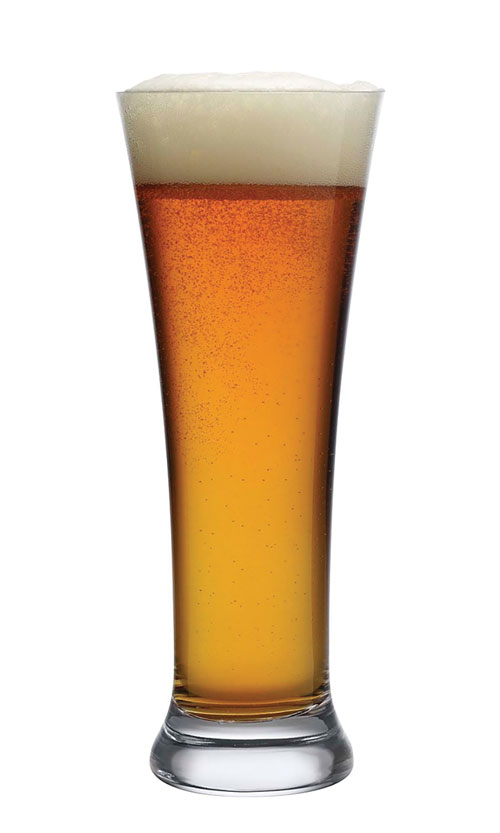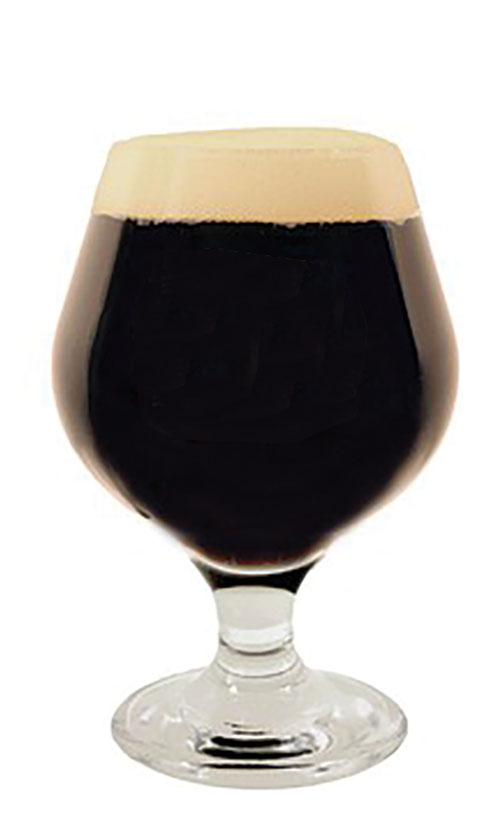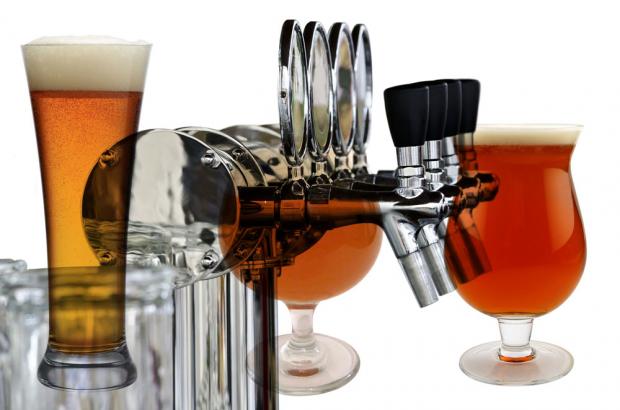The Right Glass for the Right Beer
When one thinks of a beer glass, one likely thinks of what we’ve come to call the “pint glass,” a staple at every pub, bar, and restaurant across the country. While dependable, useful, and classic in its own right, a standard pint glass does not do justice to every single style of beer.
While many of you know how much your glass can impact your drinking experience, there’s probably an equal number of you already feeling skeptical. You’re thinking: What’s wrong with my trusty pint glass? Well, there’s nothing wrong with your pint glass. Just like there’s nothing wrong with the can, bottle, or keg the beer you’re drinking came from. But there are alternatives. Better alternatives.
If you’re drinking for the drunk, then go with your classic pint glass. Heck, if you’re only about the drunk, use a Solo cup, or ditch the idea of drinkware altogether and sip straight from the bottle or can. But if you’ve made it this far reading, I’d venture to guess that you’re not drinking for the drunk. So let’s talk about what you need to enjoy your beer drinking experience fully.
You’ve likely poured a beer in your day. Or at least you’ve watched one poured. You know the way the beer changes as it hits the glass. The color transforms, the head develops, and when you bring it close to your mouth, you begin to experience the aroma (or “bouquet”) of the brew. The color shimmers, the foam swirls, and it’s no longer lifeless liquid trapped in a bottle or can, it’s a carefully crafted beverage destined to improve your day.
But why is beer from a glass better? According to BeerAdvocate:
Scientific studies show that the shape of glassware will impact head development and retention. The foam created by pouring a beer acts as a net for many of the volatiles in a beer. What’s a volatile? Compounds that evaporate from beer to create its aroma, such as hop oils, all kinds of yeast fermentation byproducts like alcohol, fusels and fruity esters, spices, or other additions. So a glass that promotes a healthy foam head may enhance the trapping of certain volatiles. And as varying levels of head retention and presentation are desired with different styles of beers, different styles of glassware should be used accordingly.
I too was once a skeptic of specialty drinkware. I was a level-one glassware geek; that is, I wanted my beer in a pint glass as opposed to the can or bottle. Why? Because I got to savor the smells, appreciate the head, and experience the full flavor. But a pint glass was all I needed. All those other fancy glasses? No way. Not for me. I was a beer drinker, not a beer snob.
That all changed when I attended a demonstration from Spiegelau, the German glassmakers responsible for the world’s first IPA glass and plenty of other specialty vessels. The consultant from Spiegelau set everyone up with one of their craft beer glassware sets, along with a standard pint glass for comparison.
A representative from Southern Tier Brewing Company came along and brought one style appropriate for each glass. We got a sample in the pint, and then a sample in the specialty glassware. We tried the same beer in each glass, sip for sip. On the first comparison, I immediately noticed a difference. And there’s no way my words alone can convince you. You have to experience it. So, below, check out four specialty beer glasses, and try this experiment yourself at home.
 PILSNER GLASS
PILSNER GLASS
Design: Tall, slim, and tapered toward the bottom.
Benefits: Captures color, clarity, and carbonation, while retaining the head and enhancing volatiles.
Use it with: Light lager, blonde ale, hefeweizen, witbier, doppelbock.
 SNIFTER
SNIFTER
Design: Constructed much like a brandy glass, Snifters have a bulbous shape with a stemmed bottom.
Benefits: Enhances aroma and volatiles with a gentle swirl.
Use it with: Belgian IPA, pale ale and dark ale, American and English barleywine, lambic, Russian imperial stout.
 FLUTE
FLUTE
Design: Much like a champagne glass, the flute differs only in its shorter stem.
Benefits: Provides vibrant color, strong aromas, and lasting carbonation.
Use it with: Eisbock, maibock, schwarzbier, Vienna lager, Euro strong ale.
 TULIP GLASS
TULIP GLASS
Design: Shaped like a tulip flower with a stemmed bottom, a bulbous lower body, and a tapered top that opens back up at the lip of the glass.
Benefits: Luscious, foamy head with highly retained volatiles.
Use it with: Saison, Scotch ale, Belgian strong ale, imperial IPA, quadrupel.
Of course there are more than just the four listed above, but this gives you a crash course on some of the most popular specialty craft beer glasses. Now you know what it takes to fully enjoy some of your favorite brews. But don’t just take my word for it. Try it yourself—just remember to compare each style with a standard pint glass. You won’t be disappointed.

Caleb Houseknecht is social media organizer at KegWorks. This column appears through a partnership with the Buffalo Niagara Brewers Association.

